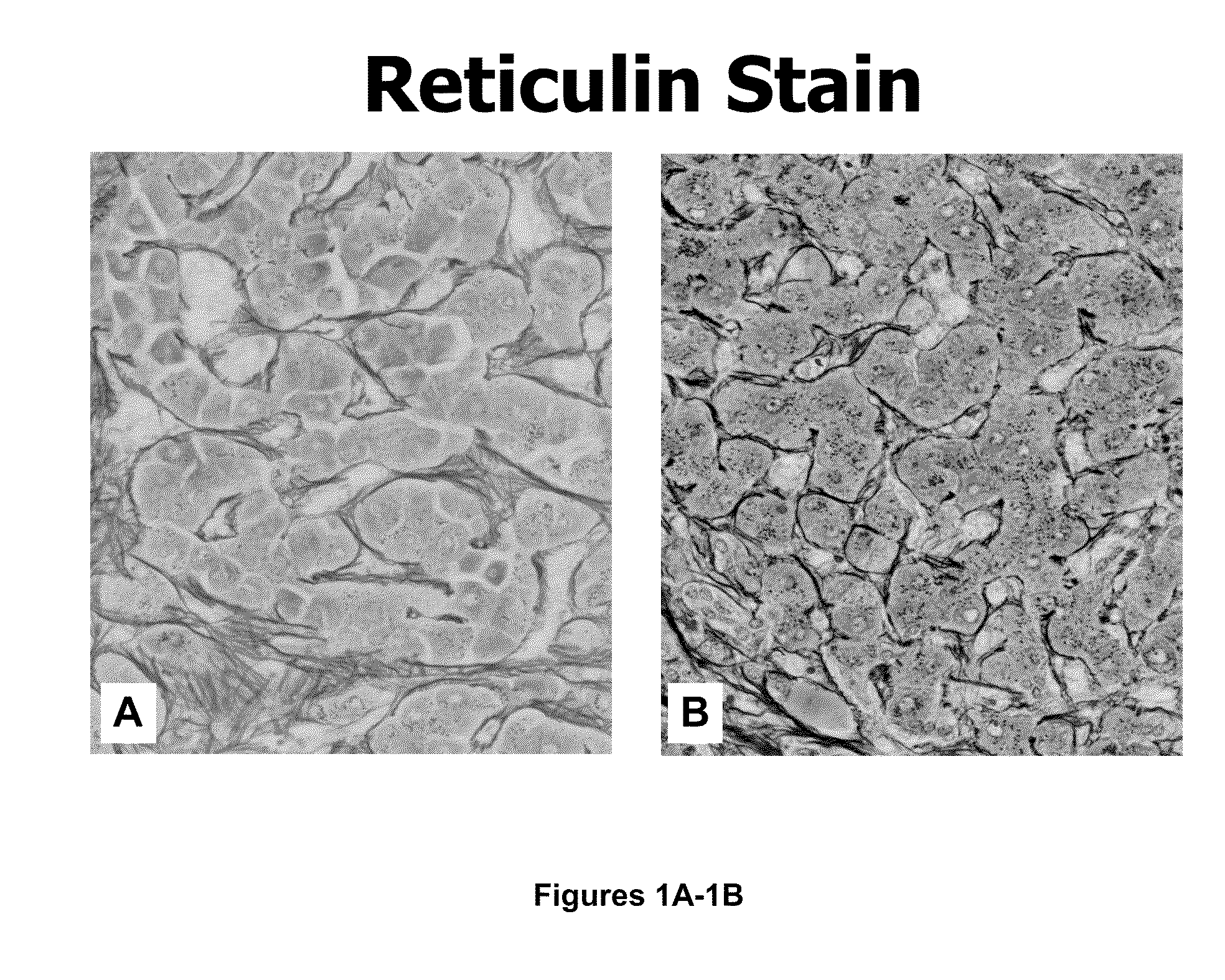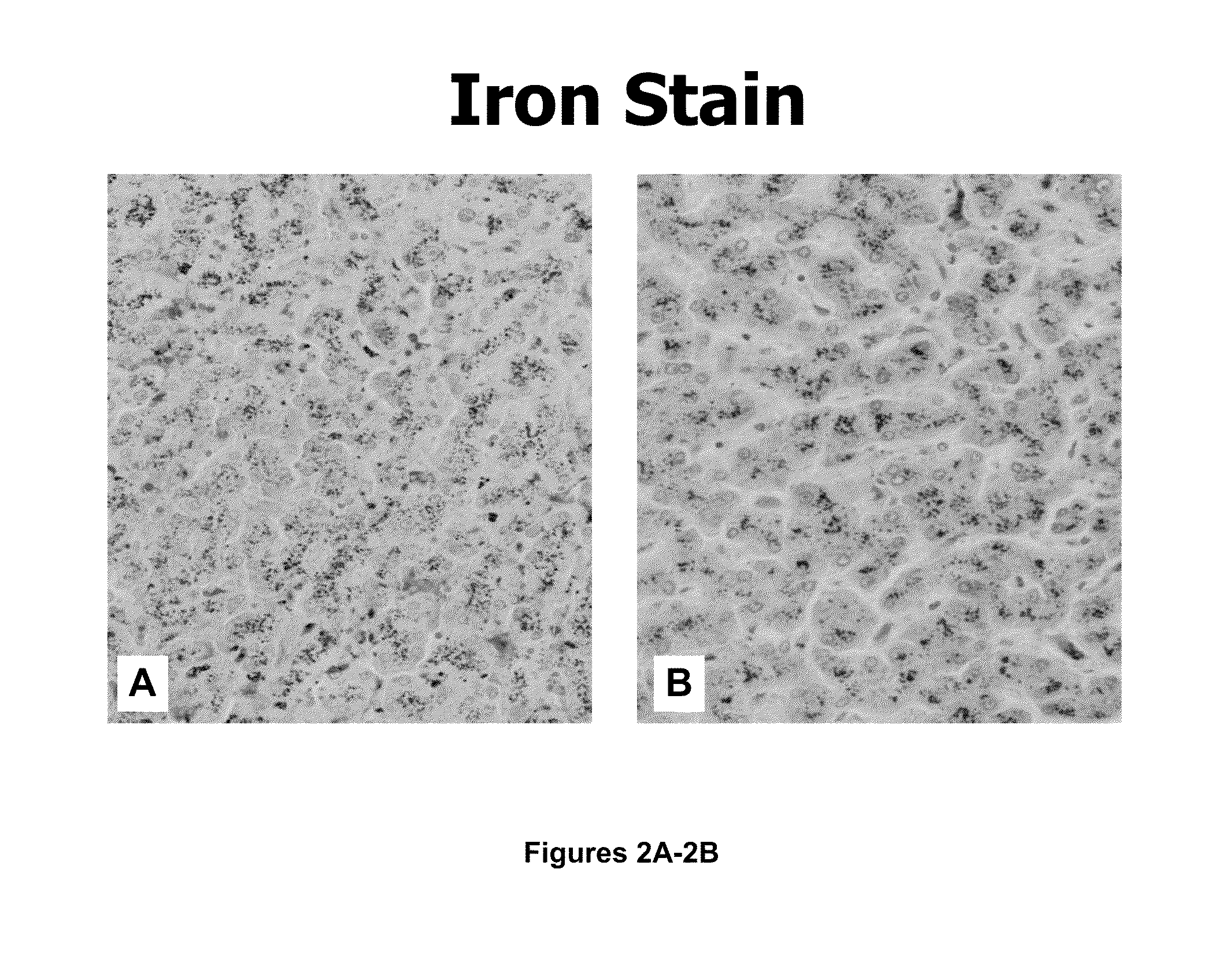Methods and compositions for nuclear staining
a technology of compositions and nuclear staining, which is applied in the field of methods and compositions for nuclear staining, can solve the problems of limited stability in solution, incompatibility of nuclear fast red with all the above mentioned staining procedures, etc., and achieve the effect of superior tissue architecture and cellular detail
- Summary
- Abstract
- Description
- Claims
- Application Information
AI Technical Summary
Benefits of technology
Problems solved by technology
Method used
Image
Examples
example 1
Preparation of 0.1% Pararosanilin Solution
[0033]The 0.1% pararosanilin solution of the present invention is prepared by combining 0.1 gram pararosanilin (C.I. 52000) with 100 mL 0.6% lactic acid solution and 0.1 mL of 25% polysorbate 20. The pH of this solution is approximately 2.50.
example 3
Modified Gomori's Method for Reticulin Staining with Nuclear Counterstain in Liver Tissue Sections
[0035]Liver tissue samples were fixed in 10% buffered neutral formalin and embedded in paraffin. Paraffin sections were cut at 5 μm. For reticulum staining, sections were deparaffinized, hydrated, and then oxidized using acidified potassium permanganate (0.3 gm potassium permanganate, 100 mL distilled water, and 0.2 mL sulfuric acid) for three minutes. Sections were rinsed in distilled water and reduced with 1% potassium metabisulfite for 1 minute. Sections were rinsed with running tap water for three minutes and then rinsed with four changes of distilled water prior to incubating with Ammoniacal silver solution for two minutes. Tissue sections were then rinsed three times and reduced in 10% formalin for one minute. Following the incubation in formalin, the sections were washed with running tap water for one minute and then rinsed with two changes of distilled water. Next, sections were...
example 4
Perl's Method for Ferric Iron Staining with Nuclear Counterstain in Liver Tissue Sections
[0038]Liver tissue was fixed in 10% buffered neutral formalin, embedded in paraffin, and cut at 5 μm for staining. Slides containing the liver tissue sections were deparaffinized and hydrated in distilled water. Slides were then placed in hydrochloric acid-potassium ferrocyanide solution (20 mL 2% hydrochloric acid and 20 mL 1% potassium ferrocyanide) for 30 minutes at room temperature. Following this incubation, the slides were rinsed in five changes of distilled water and counterstained with 0.1% nuclear fast red solution of Comparative Example 2 for 5 minutes or the 0.1% pararosaniline solution of Example 1 for 10 seconds. Sections were rinsed, dehydrated, cleared in xylene, and mounted with synthetic resin.
[0039]FIGS. 2A and 2B show a comparison of the ferric iron staining in liver tissue with nuclear fast red counterstain (FIG. 2A) and 0.1% pararosaniline nuclear counterstain (“strong fast ...
PUM
| Property | Measurement | Unit |
|---|---|---|
| exposure time | aaaaa | aaaaa |
| exposure time | aaaaa | aaaaa |
| pH | aaaaa | aaaaa |
Abstract
Description
Claims
Application Information
 Login to View More
Login to View More - R&D
- Intellectual Property
- Life Sciences
- Materials
- Tech Scout
- Unparalleled Data Quality
- Higher Quality Content
- 60% Fewer Hallucinations
Browse by: Latest US Patents, China's latest patents, Technical Efficacy Thesaurus, Application Domain, Technology Topic, Popular Technical Reports.
© 2025 PatSnap. All rights reserved.Legal|Privacy policy|Modern Slavery Act Transparency Statement|Sitemap|About US| Contact US: help@patsnap.com



